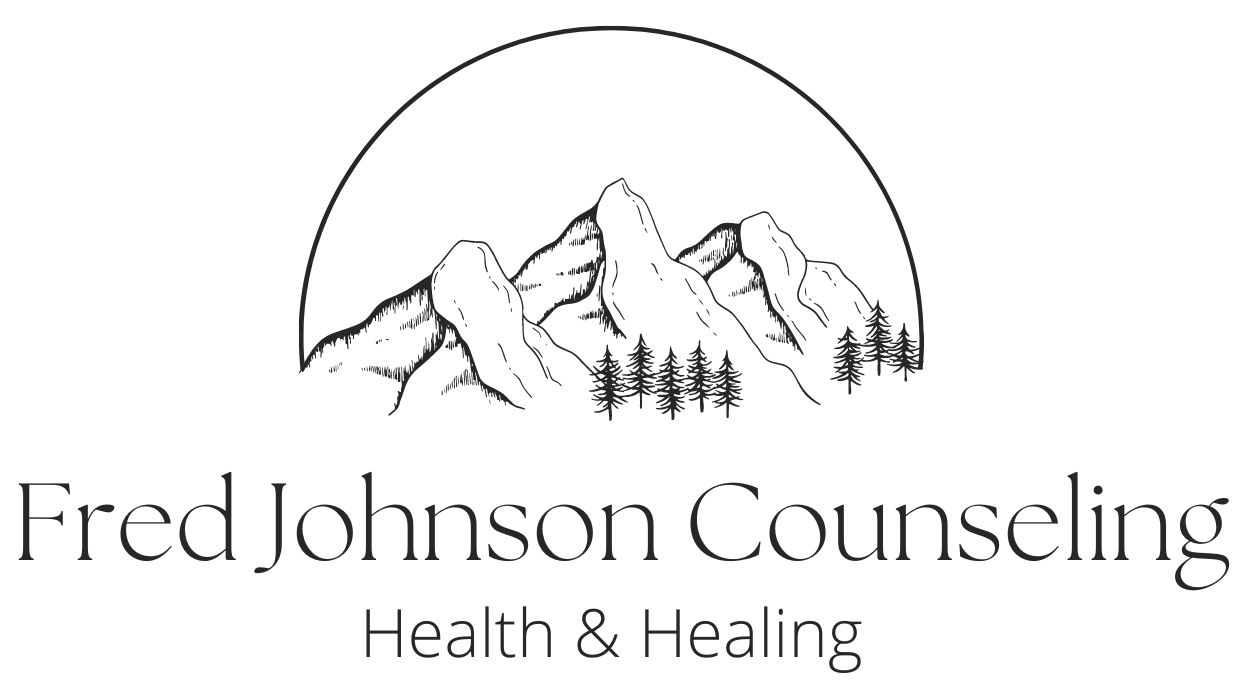Blog Layout
Problem Solving 101
Fred Johnson • March 2, 2023
Finding Solutions in Unexpected Ways
Who doesn’t love a good challenge? Challenges can be an exciting part of life. Until of course, there isn’t a perceived solution to said challenges. Then, the very same challenges can become burdens or problems. When that happens, it is helpful to have a plan. Here are three options to handle or solve problems effectively AND that do not lead to misery or pointless suffering.
Option #1: Fix the problem
This option seems simple enough. If you face a problem, assess whether you can reasonably fix or resolve it. Then work to do so. Set your objective, develop a plan or timeline on how to meet that objective, and then pull the needed resources to do so and begin.
For most of us, this is how we would like to handle all problems. However, not all problems can be fixed. When this happens, trying to fix it might just be insanity! Learn to recognize when to leave this option and consider one of the following.
Option #2: Change the way you think about the problem
Ever had to compromise? Compromising is a form of altered expectations and realized standards. It is also a change in the way you considered a solution to a desire. This is one way of changing the way you think about a problem, by altering your expectations of the whole situation or the resolution needed.
Changing the way you think about a problem is empowering because it allows you to redefine the problem or situation. A great example would be deciding on a different ice cream flavor if your favorite is sold out. You can rage, complain, or walk out of the ice cream shop, but deciding that an alternate flavor is better than no ice cream allows you to accept reality and adapt. Plus, you still get ice cream! If this option doesn’t fit your situation (because sometimes it doesn’t), then let’s consider our last option.
Option #3: Acceptance
This is perhaps the least favorite option for most and it has the broadest range of definition. Remember, we use this once we have not been successful in trying to fix a problem or change the way we think about it. An easy way to think of acceptance is to remind yourself, if you are still trying to fix it, you are not accepting it and thus back into misery. Far too often, it is our own desires or ideas of how a situation should be that causes us pain, then actually the situation itself.
Acceptance is the process of allowing yourself to be present with the way things really are, rather than striving to make things different. Practicing acceptance doesn’t mean that you like or condone a circumstance. It is simply acknowledging what the circumstance is without trying to “fix” it. Try saying acceptance statements such as, “There is no other way this has to be right now” or “This (problem) will pass, and I will be ok.” Practicing acceptance is sometimes the avenue for change in our lives. When we accept ourselves or a situation, our self is then free to grow and change by no longer devoting our resources to changing the thing(s) we cannot.
If you read through this and would like a supportive voice to help navigate problems in your life, contact me to get started.

By Fred Johnson
•
October 1, 2024
Most of us don’t want to admit it, but the arrival of October signals the official start to the holiday season. Within the next 91 days, there will be everything from spooky lanterns, stuffed turkeys, and sales catalogues arriving in the mail or inbox on the regular. Parties to attend, events to support, and special “once a year” gatherings will all demand our focus and presence. One thing is for certain, If you’re of adult age with even a mild case of responsibility, you will begin to experience what I call, “Holiday Time-Slippage.” Holiday Time-Slippage is the phenomenon wherein the busier and faster our lives become during the holidays, the less time we have to enjoy the holidays. In trying to do it all, we miss all that we do. Ok, I’ll admit I made that up. I even googled it to see if it was a thing. It’s not. Perhaps I just made it a thing, but more likely it is just a fun play on words that ends with this blog post. In either case, I think it’s important to be mindful of the changing of the seasons and what those signals for many. The 16th century produced a carol of Welsh origin we now know as “Deck the Halls.” Within the lyrics, the phrase “‘Tis the season” has become a popular connotation of the holidays in general. Sometimes we use it as a greeting, coping phrase, or in an excusing manner, because after all, “’Tis the season, right?” What we miss in doing so, is the instructive reply the original lyric provides: “… to be jolly.” To experience a cheerful and happy time. In talking with people daily about their lives, I am reminded that not everyone enters this season with the hope of joy and jolly nature. Life can be hard. Holidays can bring triggers, those sharp painful reminders. The holiday seasons can be an extremely isolating time for many. We need the care of each other in these times. We need connection. We need people in our life who will laugh and love, who will share a moment. Maybe you are the person able to provide that for another. Maybe you’re the person who needs that. If I can remind and encourage you today, that in all your seasons upcoming, allow time to simply be jolly.

By Fred Johnson
•
August 1, 2024
Each year, on the first day of August, I remind myself that we are closer to the end of the month than ever before. Each day after, as sweltering humid heat swarms us here in the south, I am reminded that it is now one day closer to the sweet relief of fall temperatures. I’m not sure how I would fair, if by chance, I believed the rampant heat waves of August would never leave. Thankfully, I know seasons come and seasons go. The dreaded drudgery of a hellacious August will soon be gone. The expounding beauty of fall, with leaves changing and cool breezes blowing, will soon arrive. Admittedly, this confession of seasonal distaste is a bit melodramatic. Yet, it serves as a practical example of what is known as “tolerable” stress and an adaptive coping response. Types of stress vary, but the three main categories are “good/positive”, “tolerable”, and “toxic” (1). These categories are not concrete or strictly defined by rules and circumstance necessarily. What is “good” stress for one person, may be “toxic” for another. Throughout our lives, the same stressors can change categories multiple times. Stress levels depend on the degree to which a person perceives control over a stressor or situation and whether they have support systems or resources in place to handle the stressor over their lifespan (2). A flat tire one day may be nothing other than a slight inconvenience. Yet on another day, it may represent all the uncontrollable forces keeping you from arriving on time to an important job interview. An easier way of saying all of this is, when we lose our sense of being (ability to control or make decisions) to a circumstance, we are a susceptible to toxic stress. This is where endurance comes in. I would love to say there is short and simple method to reduce and mitigate all toxic stress in our lives. Unfortunately, this just isn’t so. It doesn’t need to be. Because life, people, the world we live in, are all super complicated. What is important and hopeful: the effects of chronic/toxic stress in the brain and body are responsive to recovery and healing. Let’s talk about endurance as a helper for stress. Endurance, or the ability to withstand hardship or adversity, can be a simple, but effective tool to transition from toxic stress to tolerable stress. Enduring is a mindset of “thriving despite”. Thriving despite the terrible. Living beyond the hurt or difficulty. Healing to be able to accept good again. The difference in the stress types is significant. Remember that our perception plays a major role in which is which. Positive/good stress: normal life challenges such as receiving a promotion, learning a new skill, exercise, or having a child. Here we are allowed goals, enjoy success, and try new things. Choice remains in these. Tolerable stress is usually non-normative. Examples are loss of a loved one, serious illness, or natural disasters. There is a sense of unfairness in this. Often the choice to feel good is removed or feels wrong to do so. Our choice is questioned here. Toxic stress is typical adverse and inappropriate. Over time it can carry heavy physical and psychological consequences. All of life is darkened by this. Seeing good is tinted by what we have been through or currently in. We usually feel there is no choice in these. Abuse, intimate partner violence, Determining in our mind, to endure, withstand, and survive a critically difficult situation can move us from toxic stress to the tolerable type, then eventually the good type of stress. Living to allow good again. If ever there was a sentence that embodied the old phrase, “easier said than done” ---- that one was it. Tragically, it seems toxic stress only makes us good at surviving trauma or the terrible. It limits our ability to enjoy or even to see the beauty in a moment. The healing process allows us to be more human than before toxic stress skewed our view of the world. Talking with a counselor can be a critical part of healing. I hope that perhaps today in reading this, you’ve found a tool to help enduring despite what you’re up against. Notes: 1. https://center.uoregon.edu/StartingStrong/uploads/STARTINGSTRONG2016/HANDOUTS/KEY_49962/TypesofStress.pdf 2. https://www.ncbi.nlm.nih.gov/pmc/articles/PMC2864527/

